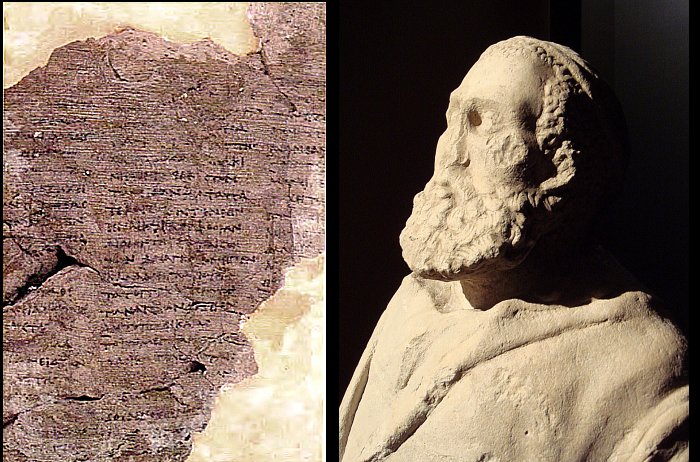Lost Ancient Greco-Bactrian Kingdom Of 1,000 Cities
A. Sutherland - AncientPages.com - The Graeco-Bactrian Kingdom was located in the easternmost region of the Hellenistic world. This ancient kingdom covered Bactria (northern Afghanistan) and lands to the north (known in ancient times as Sogdiana, in present-day Turkmenistan, Uzbekistan, and Tajikistan).
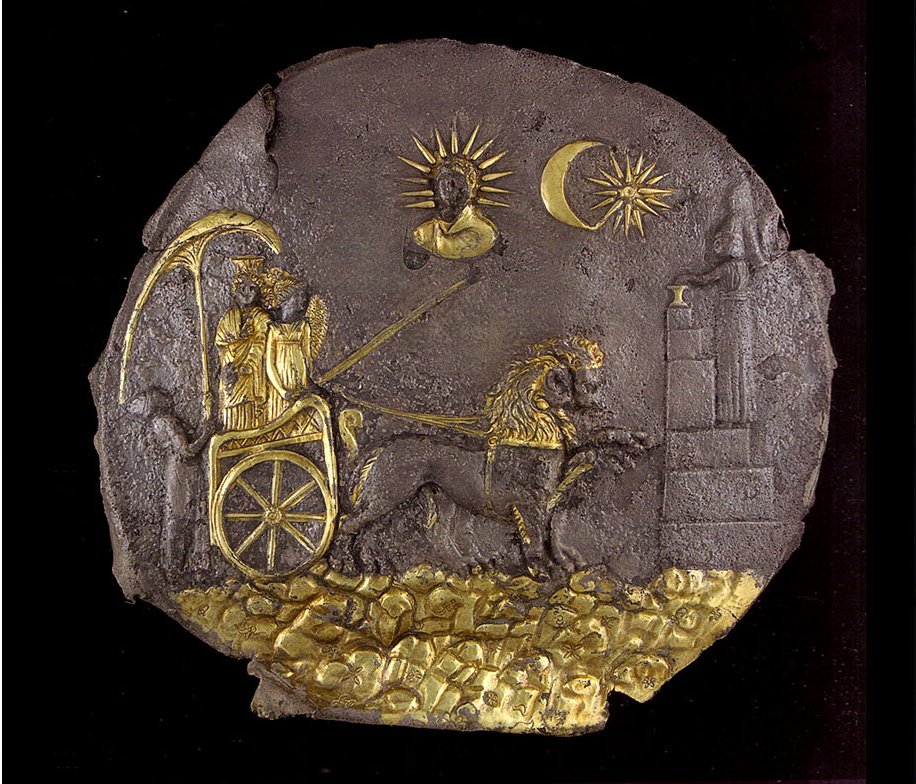 Silver plaque depicting the Greek goddess Cybele on a chariot is from a temple in Ai Khanum Afghanistan, 200 BC - Temporarily in Paris Musée Guimet. Image source - https://www.flickr.com/photos/28433765@N07/7102760363
Silver plaque depicting the Greek goddess Cybele on a chariot is from a temple in Ai Khanum Afghanistan, 200 BC - Temporarily in Paris Musée Guimet. Image source - https://www.flickr.com/photos/28433765@N07/7102760363
For at least two centuries before Alexander arrived in 330 BC, Bactria had been a prized part of the Achaemenid Empire (559-330 BC) and, before that, the Median Empire (728-559 BC).
Greek prisoners captured in wars between the Achaemenids and Greeks during the 5th and 4th centuries BC were often exiled to Bactria and taken to Bactria.
When Alexander the Great and his army arrived in Bactria, many Greeks were already there. As a result, the Greek population grew more extensive in the region.
Bactrian Greeks were often employed by the Achaemenids in significant battles and conscripted by Alexander for his campaigns in the East.
Left: Philosophical papyrus Ai Khanoum - Claude Rapin, 1992 (Non-creative 2D photograph of a 2nd century BCE papyrus.); Right: Sculpture of an old man, possibly a philosopher. Ai Khanoum, 2nd century BCE. Musee Guimet. Personal photograph 2006 - Public Domain
After the unexpected death of Alexander the Great, the situation in the region changed. Many of his Macedonian generals were left without a home. The kingdoms of the East were divided among Alexander, the Great's successors.
The government of Parthia was committed to Stasanor, a foreign ally because none of the Macedonians would deign to accept it. Subsequently, when the Macedonians were divided into parties by civil discord, the Parthians, with the other people of Upper Asia, followed Eumenes and went over to Antigonus when he was defeated.
After his death, they were under the rule of Seleucus Nicator and then under Antiochus and his successors, from whose great-grandson Seleucus they first revolted, in the first Punic war, when Lucius Manlius Vulso and Marcus Attilius Regulus were consuls.
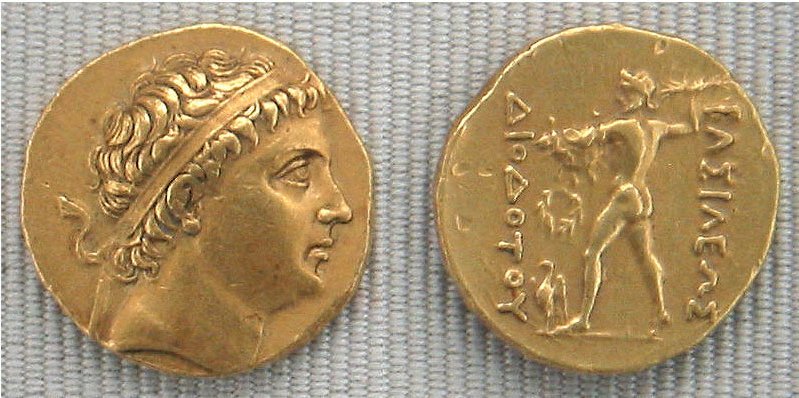 Gold coin of Diodotus I, Seleucid satrap of Bactria who rebelled against Seleucid emperor Antiochus and became the self-crowned ruler of the Greco- Bactrian kingdom. Image credit: National Library in Paris
Gold coin of Diodotus I, Seleucid satrap of Bactria who rebelled against Seleucid emperor Antiochus and became the self-crowned ruler of the Greco- Bactrian kingdom. Image credit: National Library in Paris
For their revolt, the dispute between the two brothers, Seleucus and Antiochus, procured them impunity; for a while, they sought to wrest the throne from one another, but they neglected to pursue the revolters.
The ancient Greco-Bactrian kingdom first appeared in 250 BC. E when the satrap Diodotos (or Theodotus in Latin), governor of the thousand cities of Bactria, rebelled against his Seleucid ruler, Antiochos II assumed the title of king.
In the third century BC, the Greco-Bactrian kingdom became so powerful that it declared independence.
People from various nationalities, such as Persians, Indians, Scythians, and many nomadic groups, contributed to developing a unique kingdom. Greco-Bactrian art was known to be one of the finest at this time.
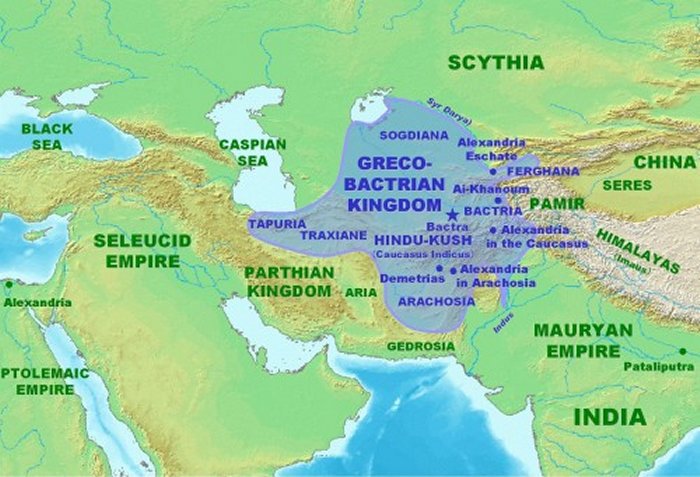 Greco Bactria Kingdom map -Approximate maximum extent of the Greco-Bactrian Kingdom circa 170 BC, under the reign of Eucratides the Great, including the regions of Tapuria and Traxiane to the West, Sogdiana and Ferghana to the north, Bactria and Arachosia to the south. Martinez-Sève, Laurianne (2020) "Afghan Bactria" in Mairs, Rachel , ed. The Graeco-Bactrian and Indo-Greek World (1st ed.), London: Routledge, pp. 218–219
Greco Bactria Kingdom map -Approximate maximum extent of the Greco-Bactrian Kingdom circa 170 BC, under the reign of Eucratides the Great, including the regions of Tapuria and Traxiane to the West, Sogdiana and Ferghana to the north, Bactria and Arachosia to the south. Martinez-Sève, Laurianne (2020) "Afghan Bactria" in Mairs, Rachel , ed. The Graeco-Bactrian and Indo-Greek World (1st ed.), London: Routledge, pp. 218–219
The culture and vast wealth these nomadic warriors accumulated during their advance were documented by the jewelry, ceremonial weapons, and other treasure found at the Scythian-era site, Tillia Tepe, in northwestern Afghanistan, where five princely graves yielded some 20,000 pieces of gold.
The Greco-Bactrian kingdom became known as the empire of 1,000 cities, but sooner or later, everything ended.
In 126 BC, the Chinese chronicler Zhang Qian visited Bactria (known as Daxia in Chinese) and described a kingdom that had collapsed while its large population and urban infrastructure remained:
 Ancient ruins of the Greco-Bactrian kingdom. Image credit: Center For Environmental Management
Ancient ruins of the Greco-Bactrian kingdom. Image credit: Center For Environmental Management
"Daxia (Bactria) is located ... south of the Gui (Oxus) river. Its people cultivate the land and have cities and houses. It has no great ruler but only several petty chiefs ruling the various cities. The people are poor in using arms and afraid of battle, but they are clever at commerce. After the Great Yuezhi moved west and attacked Daxia, the entire country came under their sway.
The country's population is large, numbering some 1,000,000 or more persons. The capital is called the city of Lanshi (Bactra) and has a market where all sorts of goods are bought and sold."
The last Graeco-Bactrian king was Heliocles, who ruled 150-125 BC and moved his capital to the Kabul Valley.
Written by – A. Sutherland AncientPages.com Staff Writer
Updated on January 21, 2023
Copyright © AncientPages.com All rights reserved. This material may not be published, broadcast, rewritten or redistributed in whole or part without the express written permission of AncientPages.com
More From Ancient Pages
-
 What Were Ancient Egyptian Schools Like?
Ancient History Facts | Jul 14, 2016
What Were Ancient Egyptian Schools Like?
Ancient History Facts | Jul 14, 2016 -
 Mystery Of The Candelabrum: One Of The Most Enigmatic Ancient Giant Ground Drawings In The World
Featured Stories | Nov 2, 2015
Mystery Of The Candelabrum: One Of The Most Enigmatic Ancient Giant Ground Drawings In The World
Featured Stories | Nov 2, 2015 -
 Rock Stars: How A Group Of Scientists In South Africa Rescued A Rare 500 Kg Chunk Of Human History
Featured Stories | Oct 20, 2022
Rock Stars: How A Group Of Scientists In South Africa Rescued A Rare 500 Kg Chunk Of Human History
Featured Stories | Oct 20, 2022 -
 Unexplained Ancient Encounters With Shining Beings Who Appeared Out Of Nowhere – Who Were They?
Featured Stories | Dec 15, 2024
Unexplained Ancient Encounters With Shining Beings Who Appeared Out Of Nowhere – Who Were They?
Featured Stories | Dec 15, 2024 -
 Mystery Of The Lost Cahuenga Pass Treasure: Baffling Unexpected Deaths Caused By A Curse Or Natural Causes?
Featured Stories | Nov 2, 2018
Mystery Of The Lost Cahuenga Pass Treasure: Baffling Unexpected Deaths Caused By A Curse Or Natural Causes?
Featured Stories | Nov 2, 2018 -
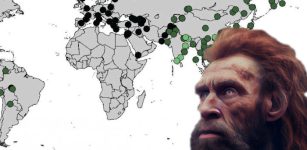 World Map Of Neanderthal And Denisovan DNA In Modern Humans
DNA | Apr 13, 2023
World Map Of Neanderthal And Denisovan DNA In Modern Humans
DNA | Apr 13, 2023 -
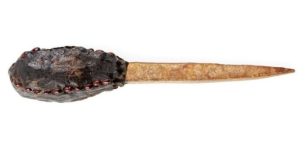 Tomography And Radiocarbon Dating Used To Examine Australian Aboriginal Knife
Archaeology | Jul 3, 2023
Tomography And Radiocarbon Dating Used To Examine Australian Aboriginal Knife
Archaeology | Jul 3, 2023 -
 Unique 1,600-Year-Old Gold Bead Found By Teenager In Jerusalem’s City Of David
Archaeology | Feb 9, 2023
Unique 1,600-Year-Old Gold Bead Found By Teenager In Jerusalem’s City Of David
Archaeology | Feb 9, 2023 -
 Ancient Tomb Of ‘Bird Oracle Markos’ Unearthed In Bergama (Pergamon), Turkey
Archaeology | Sep 6, 2022
Ancient Tomb Of ‘Bird Oracle Markos’ Unearthed In Bergama (Pergamon), Turkey
Archaeology | Sep 6, 2022 -
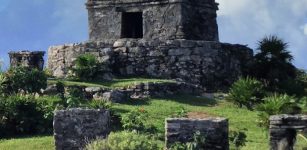 Maya Site With At Least 300 Buildings Some Of Which Are Over 8 Meters High – Discovered
Archaeology | Sep 16, 2022
Maya Site With At Least 300 Buildings Some Of Which Are Over 8 Meters High – Discovered
Archaeology | Sep 16, 2022 -
 Eduba: Scribal School In Ancient Mesopotamia
Ancient History Facts | Jun 29, 2016
Eduba: Scribal School In Ancient Mesopotamia
Ancient History Facts | Jun 29, 2016 -
 Rare 500-Year-Old Wreck From Missing Ship Samson Discovered In Central Stockholm, Sweden
Archaeology | Dec 20, 2019
Rare 500-Year-Old Wreck From Missing Ship Samson Discovered In Central Stockholm, Sweden
Archaeology | Dec 20, 2019 -
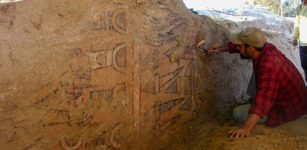 Exceptional Discovery Of Ancient Fresco Depicting Mythological Scenes In Peru
Archaeology | Dec 1, 2022
Exceptional Discovery Of Ancient Fresco Depicting Mythological Scenes In Peru
Archaeology | Dec 1, 2022 -
 Remarkable Kailashanatha Temple And Unique Passage Of Life Cycle Including Aging, Death And Rebirth
Civilizations | Mar 26, 2017
Remarkable Kailashanatha Temple And Unique Passage Of Life Cycle Including Aging, Death And Rebirth
Civilizations | Mar 26, 2017 -
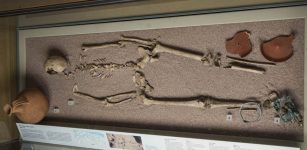 London Was Always A Multicultural City, DNA Research Confirms
Archaeology | Nov 26, 2015
London Was Always A Multicultural City, DNA Research Confirms
Archaeology | Nov 26, 2015 -
 Roman Leather Toy Mouse Found At Vindolanda
Archaeology | Jun 6, 2023
Roman Leather Toy Mouse Found At Vindolanda
Archaeology | Jun 6, 2023 -
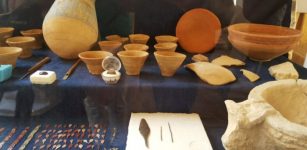 New Discoveries In the Valley Of The Monkeys In Luxor, Egypt
Archaeology | Oct 11, 2019
New Discoveries In the Valley Of The Monkeys In Luxor, Egypt
Archaeology | Oct 11, 2019 -
 Freya – Vanadis: Beautiful Desirable Goddess And Her Brisingamen Necklace In Norse Mythology
Featured Stories | Jan 21, 2018
Freya – Vanadis: Beautiful Desirable Goddess And Her Brisingamen Necklace In Norse Mythology
Featured Stories | Jan 21, 2018 -
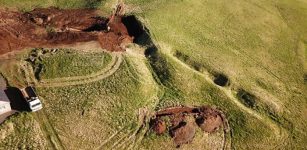 Surprising Discoveries In Mysterious Giant Viking-Era Cave In Iceland Can Confirm Norse Sagas
Archaeology | May 31, 2022
Surprising Discoveries In Mysterious Giant Viking-Era Cave In Iceland Can Confirm Norse Sagas
Archaeology | May 31, 2022 -
 Beautiful Legend Of Maneki-neko – The Japanese Good Luck Charm Cat Raising A Paw
Featured Stories | Oct 10, 2021
Beautiful Legend Of Maneki-neko – The Japanese Good Luck Charm Cat Raising A Paw
Featured Stories | Oct 10, 2021

